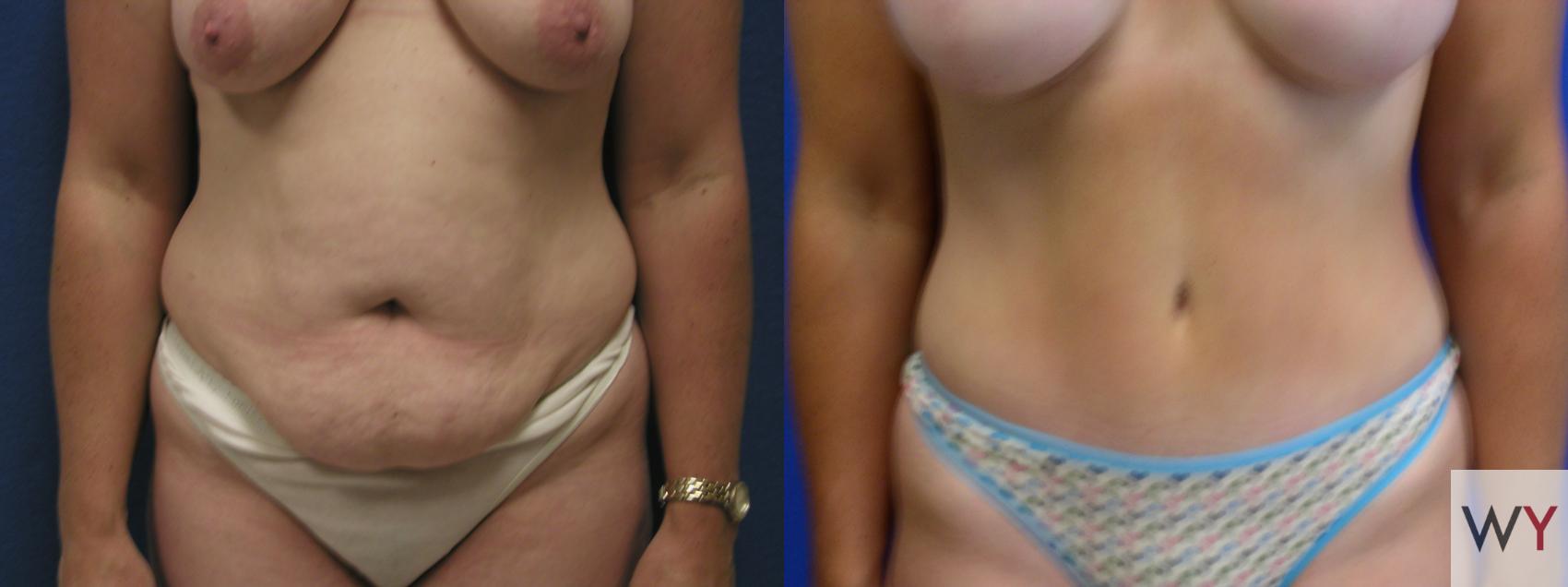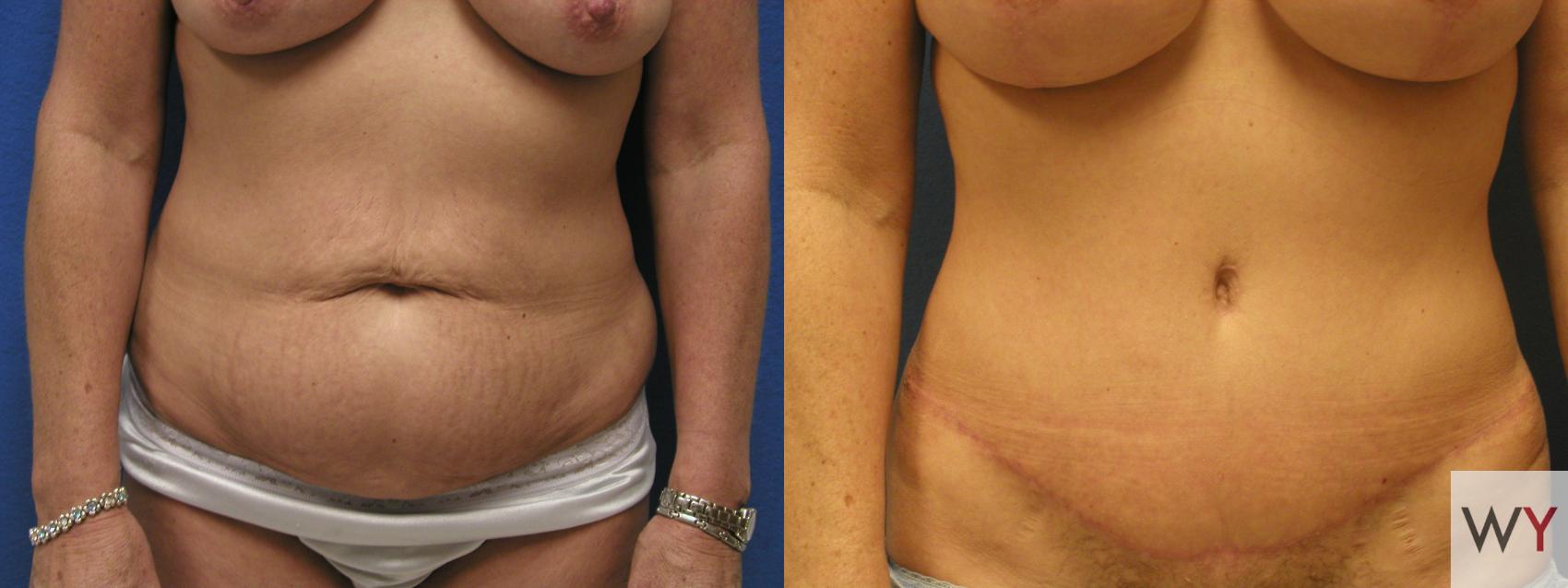Some of the most frustrated patients I meet are those dealing with what’s often called a “belly pooch.” Despite losing pregnancy weight, working hard in the gym, or reaching their goal weight after major lifestyle changes, they still struggle with a stubborn bulge that won’t go away. For many women, this develops after pregnancy, sometimes even leading to the uncomfortable experience of being asked if they’re pregnant again. Men can also experience the same issue, often after weight fluctuations or heavy lifting.
Often, the culprit is a condition known as diastasis recti. In this post, I’ll explain what it is, its symptoms and causes, and how a tummy tuck can repair it for lasting results.
What Is Diastasis Recti?
Diastasis recti is the separation of the rectus abdominis muscles—the “six-pack” muscles—caused by the stretching of the connective tissue (the linea alba) between them. Instead of staying tightly aligned, the muscles drift apart, leaving a visible gap and a weak abdominal wall.
Common causes of diastasis recti include:
- Pregnancy, especially multiple or higher-birth-weight pregnancies
- Significant weight gain or loss
- Aging and reduced tissue elasticity
- Improper or heavy lifting techniques
While most people associate it with pregnancy, diastasis recti in men is also fairly common after significant weight changes, heavy lifting, or abdominal strain.
Diastasis Recti Symptoms You Might Notice
This condition can cause more than just a belly bulge. You may experience:
- A visible ridge or “doming” along the midline of the stomach
- Core weakness or instability when exercising
- Lower back pain from poor core support
- Digestive issues or bloating
- Postural changes or difficulty standing tall
These symptoms can affect both appearance and quality of life, making it more than just a cosmetic concern.
Does Diastasis Recti Go Away Without Treatment?
In some cases, mild separation improves on its own, especially within the first year after childbirth, after significant weight loss, or following lifestyle changes in men. Still, many people notice a persistent belly bulge long after they’ve stabilized their weight.
Postpartum diastasis recti may respond to physical therapy and exercises targeting the deep core muscles. Women and men with diastasis recti after weight loss may also benefit from these approaches. However, once the connective tissue is stretched beyond a certain point, exercise alone cannot bring the muscles back together. In fact, some movements, like crunches or planks, can make the condition worse.
That’s why many people explore professional diastasis recti treatment options when conservative methods aren’t enough.
How To Fix Diastasis Recti: Treatment Options
When patients ask me how to fix diastasis recti, I explain that there are both nonsurgical and surgical approaches:
Nonsurgical approaches may include:
- Physical therapy focused on strengthening deep core muscles
- Postural training and lifestyle adjustments
- Avoiding high-strain movements that increase abdominal pressure
These methods can improve core stability and minimize discomfort, but rarely close the muscle gap completely.
Surgery for diastasis recti, most commonly performed as part of a tummy tuck, is the only way to permanently restore the muscles to their natural position.
Can a Tummy Tuck Solve Diastasis Recti?
Yes. A tummy tuck for diastasis recti is the most effective and lasting solution. During surgery, I access the abdominal muscles through a low incision, then suture the separated muscles back together. I also remove excess skin and, if needed, tighten remaining tissues for a smoother contour.
The benefits include:
- A flatter, more toned-looking abdomen
- Stronger core support and posture
- Improved comfort in clothing
- A midsection that looks and feels aligned with the rest of your body
While this procedure is especially popular for abdominal separation postpartum, I also see women and men who pursue a tummy tuck after major weight loss. In both cases, the results can be truly transformative. Learn more about who are good candidates for tummy tuck surgery.
Why Surgery Works When Exercise Doesn’t
It’s a common misconception that diastasis recti means your muscles are weak. In reality, the problem lies in the stretched connective tissue. No matter how strong your core is, the gap won’t close without surgical repair. That’s why many people who feel fit still struggle with the appearance and discomfort of ab muscle separation.
A tummy tuck restores what exercise can’t, offering both functional and aesthetic improvements. Those who have other trouble spots in addition to diastasis recti can combine their tummy tuck with other procedures like liposuction or breast lift surgery as part of a mommy makeover.
Your Next Step
If you’ve been living with a stubborn belly bulge or the symptoms of diastasis recti, you don’t have to accept it as permanent. Many patients find that repair through a tummy tuck not only improves their appearance but also helps them feel stronger and more confident in daily life.
If you’d like to learn more, I encourage you to take the next step and call my office today at (916) 929-1833 or request a consultation using the online form.
This blog was originally published in 2020 and updated in 2025.





Leave a Reply